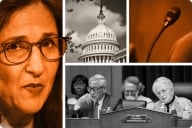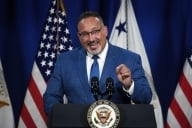You have /5 articles left.
Sign up for a free account or log in.
A report published this month by the Association of American Medical Colleges and the School of Medicine at the University of California, San Francisco, examines barriers that medical students with disabilities confront and offers some ways to improve access to medical education and the profession itself.
The report outlined a range of obstacles that students with disabilities typically encounter while studying medicine. These hurdles included a lack of clear policies and procedures, uninformed disability service providers, irrelevant or nonexistent technical standards, and a lack of access to health care and wellness support.
The report suggested several ways to improve inclusion for students with disabilities. Researchers suggested that administrators and educators designate resources for disability service providers who are knowledgeable about medical education, publicize accessible policies and processes, provide access to relevant accommodations, revise technical standards in light of current practices, and normalize and facilitate access to mental health and wellness services.
To improve the culture for medical students with disabilities, who are often viewed negatively among their peers, the report offers various recommendations: regularly revising institutional policies, training staff and faculty, implementing respectful language into curricula and pedagogy, including disability in diversity-based initiatives, increasing access to information about disability services, and reviewing recruitment and hiring practices.








